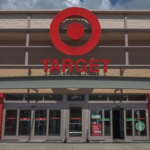Those include:
“The reality is that buying into the market especially in Manhattan or prime Brooklyn still requires a significant amount of cash upfront,” Griffith said. “Inventory is tight and competition is high, so the cost of the property itself is what keeps most buyers on the sidelines.”
Between May 2020 and May 2025, the Case-Shiller Home Price Index, which is widely used to measure U.S. residential real estate prices, jumped more than 51%.
While mortgage rates certainly make monthly payments more expensive, Griffith said, affordability “is more about the overall price tag.”
“Buyers care about rates, of course, but what really matters is having enough for the down payment and closing costs,” she added. “A small shift in rates doesn’t suddenly make that million-dollar apartment feel attainable.”
“For sellers, many are holding onto homes because they don’t want to lose the lower interest rates they locked in years ago, which keeps inventory tight and the cycle going,” he said. “The biggest issue is inventory of the types of homes that are considered affordable for middle-income families.”
When it comes to the U.S. market, tipping one scale doesn’t necessarily fix the housing affordability problem.
While “many buyers here are extremely rate-sensitive, running numbers at every shift in the market,” Kalla said, “the main barrier is that house prices have massively outpaced local incomes since before rates rose.”
“Until we tackle prices, supply, and local wage growth, affordability will remain a challenge, no matter what happens with rates,” Kalla said.









